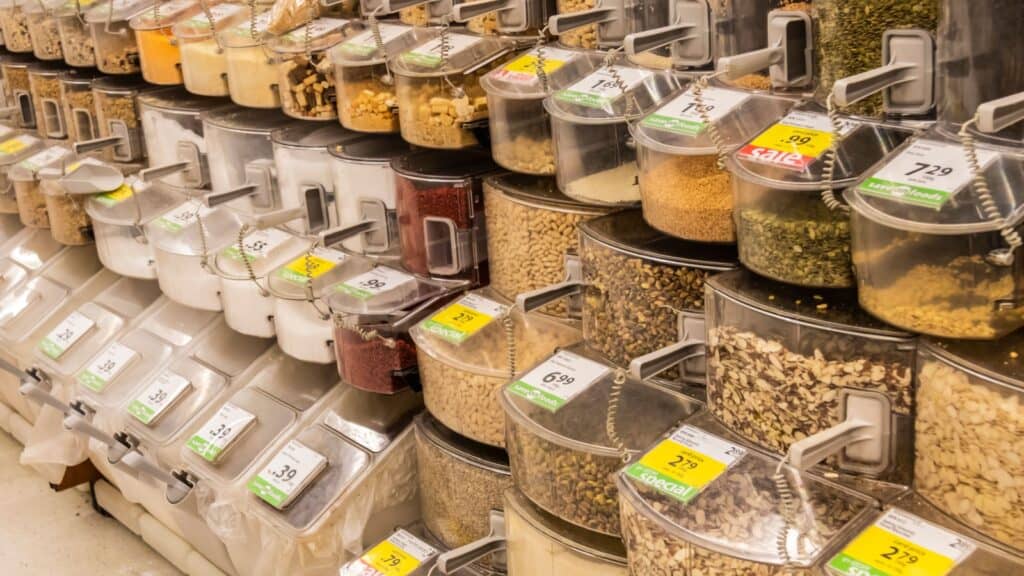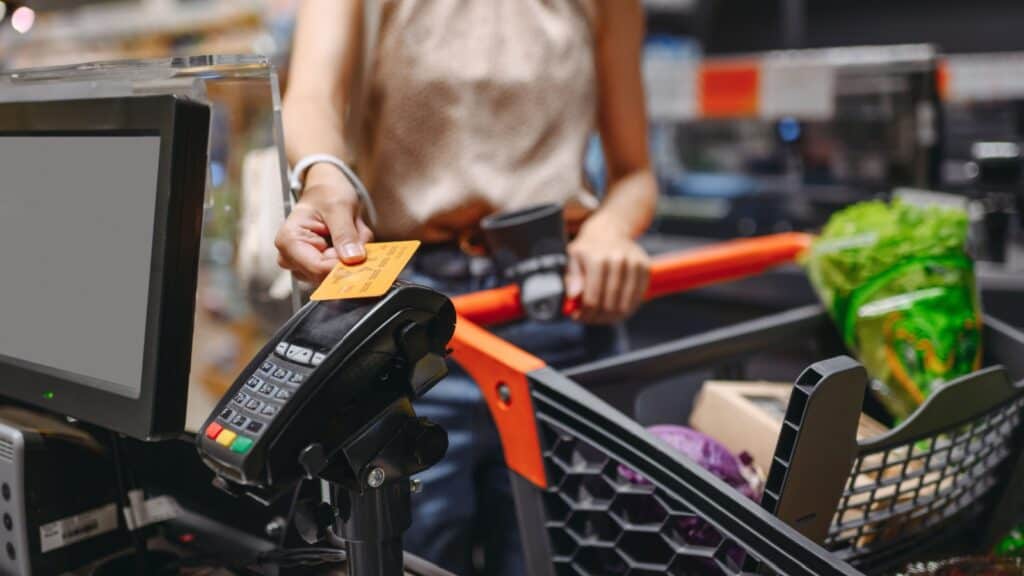18 Supermarket Shopping Hacks That Will Save You Hundreds
In February 2023, the Consumer Price Index showed a significant 11.3% increase in home food costs compared to the previous year. While the increase has slowed, it is up over 3% in 2024 from last year. Despite rising prices, it’s essential to maintain a budget without compromising on nutrition. Here are 18 effective strategies to help you save money on groceries.
Choose The Right Time

Shop during quieter times, like mid-week and mid-day, to avoid impulse purchases and stick to your meal plan.
Sign Up For Store Loyalty Programs

Join supermarket loyalty programs to receive notifications about sales and discounts, which can be substantial over time. Some programs also offer gas discounts.
Use Apps and Digital Coupons

Download your supermarket’s app or sign up for their digital newsletter to gain access to exclusive coupons and flash deals. Digital coupons can often be used in conjunction with physical coupons, allowing for double savings on some items.
Meal Plan

Prepare a weekly meal plan to shop with purpose, reducing waste and saving money, especially when you buy items on sale.
Follow the Sales Cycles

Most supermarkets operate on a 6-8 week sales cycle, meaning that items typically go on sale every six to eight weeks. Track the prices of your most commonly purchased items and stock up when they hit their lowest price.
The Store’s Perimeter Is Where’s It At

Stick to the store’s perimeter for fresh produce and refrigerated goods. Avoid the center aisles filled with more expensive, processed foods. Also, check both higher and lower shelves as products at eye level tend to be pricier.
Buy Seasonal Produce

Fruits and vegetables are much cheaper when they are in season. Plan your meals around what’s currently abundant and priced to sell. This not only saves money but also ensures you’re getting produce at its peak flavor. Stock up on sale priced vegetables and freeze them for later use. Learn to use the entire vegetable! Read: Don’t Throw That Away! 18 Surprising Recipes That Turn Food Scraps Into Gourmet Delights!
Don’t Overlook Generic

Generic brands often offer the same quality as name brands but at a lower price. Compare labels and make informed choices.
Check Unit Prices

Compare prices based on the cost per unit (like per ounce or per liter), not just the overall price. Sometimes larger sizes offer better value, but not always. Unit pricing can help you determine the best deal regardless of package size. You can download an app like Unit Price Comparison from the Google Store to help you.
Shop Solo

Shop alone to focus on your needs, avoiding extra purchases influenced by companions.
Branch Out With Lesser Expensive Cuts of Meat

Explore cheaper cuts of meat to find good quality options at lower prices. Here are some less expensive cuts of meat that you can purchase at a supermarket to save money:
- Chicken Legs, Thighs & Drumsticks: Chicken on the bone is generally cheaper and provides more flavor and nutrition due to the bone marrow and skin.
- Pork Shoulder: A tough cut of meat that becomes tender with slow cooking, making it a great value for its price.
- Beef Brisket: A relatively affordable cut of beef that’s rich in nutrients and becomes tender with slow cooking.
- Organ Meats: Offal like heart, liver, kidneys, brains, and intestines are extremely cheap and packed with nutrients, making them a great option for those looking to save money.
- Skirt Steak: A less expensive cut of steak that can be tenderized with a meat mallet and cooked to perfection.
- Chuck Roast: A cut of beef that’s often less expensive than other roasts and can be cooked to tender perfection with slow cooking.
- Boneless Ribeye: Can be found at a lower price at Asian markets, and with proper cooking, can be just as delicious as more expensive options.
- Ground Meat: Buying ground meat in bulk can be a cost-effective option, and it’s versatile for use in various dishes.
When cooking with these less expensive cuts of meat, it’s essential to follow some golden rules to ensure a juicy and tender end result. These include cooking low and slow, marinating, checking the temperature, tenderizing, and carving across the grain.
Buy In Bulk – Wisely

Purchase non-perishable items like spices and grains in bulk, but only in quantities you can use before they spoil.
Food, Yes. Shampoo and Toothpaste? Nope.

Buy personal hygiene products from drugstores or big box stores, which often offer better deals than supermarkets.
Compare Prices

Regularly compare prices, even for habitual purchases, to ensure you are getting the best deal. Use a price comparison app like one of these:
- Flipp
- Instacart
- Grocery AI
Limit Specialty Items

Specialty and gourmet items tend to be marked up significantly. If a recipe calls for a small amount of a costly ingredient, see if there’s a substitute that could work just as well for a fraction of the price. You can use an ingredient substitution guide like the one The Farmer’s Almanac has compiled.
Use A Cash Back Card

Use a credit card that offers cash back on grocery purchases to save additional money.
Eat Before You Go

Avoid shopping hungry to prevent impulse buying of unnecessary items.
Make a Flexible Shopping List

While it’s good to have a shopping list to avoid impulse buys, leave some flexibility for substituting items based on what’s on sale. For example, if you plan to buy chicken but find that turkey is on a deep discount, be ready to adjust your meal plans accordingly.
The Takeaway

By applying these tips, you can effectively manage your grocery budget and make significant savings. Start with meal planning to see immediate benefits.
Don’t Throw That Away! 18 Surprising Recipes That Turn Food Scraps Into Gourmet Delights!

Chances are you’re familiar with using carrots in your cooking, but what about their tops? Or what do you typically do with strawberry stems, fennel fronds, or broccoli stalks? We have 18 inventive recipes that utilize these often-discarded parts, promoting a zero-waste kitchen while enhancing both fun and flavor.
READ: Don’t Throw That Away! 18 Surprising Recipes That Turn Food Scraps Into Gourmet Delights!
15 Germ Hotspots To Avoid In The Grocery Store

There are ways to maintain hygiene while grocery shopping – and some things you want to steer clear of. As seasoned shoppers, we understand the importance of not only selecting the freshest produce and the best deals, but also ensuring a hygienic shopping experience. What are the 15 germ hotspots in every grocery store and how can you handle all that unwanted bacteria.
READ: 15 Germ Hotspots To Avoid In The Grocery Store
Join Us

Join us on this empowering journey as we explore, celebrate, and elevate “her story.” The Queen Zone is not just a platform; it’s a community where women from all walks of life can come together, share their experiences, and inspire one another. Welcome to a space where the female experience takes center stage. Sign up for our newsletter so you don’t miss a thing, Queen!







